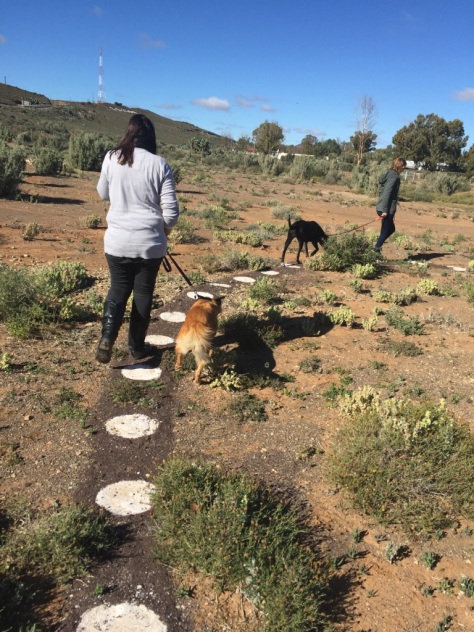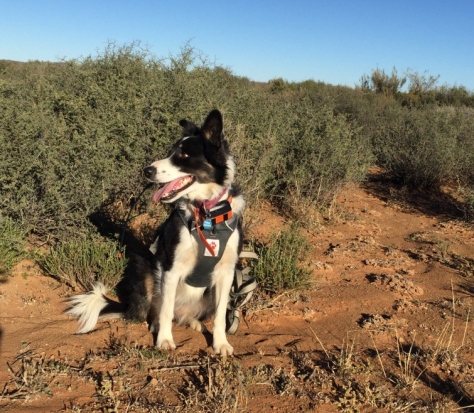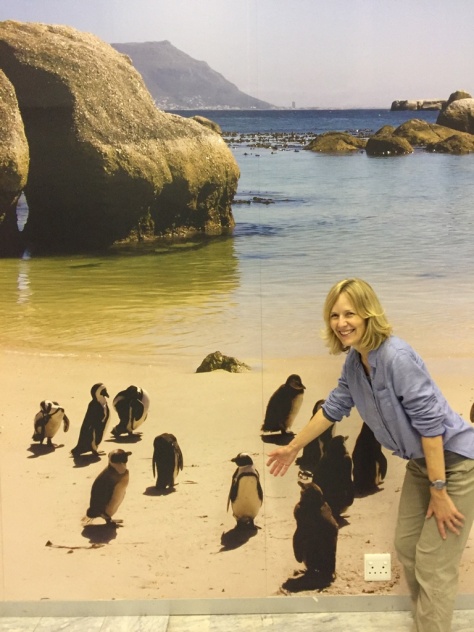While working with a conservation team in South Africa’s Nama-Karoo, I stumbled on something magical: a riverine rabbit geoglyph replete with a time-lapse jumping rabbit!
An inspiring example of community engagement around conservation, the geoglyph is one of two permanent geoglyph installations in the Karoo that aim to help protect the “biomes of vast stretches of arid landscape in South Africa.” My host organization, the Endangered Wildlife Trust, has co-sponsored the project.

In Loxton, where I held a weeklong Open Standards training workshop with the Endangered Wildlife Trust’s Drylands Conservation Programme (DCP), community members embrace the riverine rabbit as a local totem of sorts. It’s therefore not surprising that the rabbit became the subject of a 1km-long geoglyph project known as the Riverine Rabbit Thinking Path.
Check out this magical time-lapse video!
About the Riverine Rabbit
The riverine rabbit (Bunolagus monticularis) is among the world’s rarest species. Listed as critically endangered since 2003, it’s sad claim to fame is that it’s South Africa’s most endangered species.
Shortly after its discovery in 1902, B. monticularis became known as the “pondhaas” (pound rabbit), because Captain G.C. Shortridge, curator of King William’s Town’s Kaffrarian Museum (now the Amathole Museum) offered one pound (the currency at the time) for each rabbit delivered to him.
True to its name, this specialized Logomorph occurs in riparian areas of South Africa’s semi-arid Nama- and Succulent Karoo. As a key indicator species for ecosystem health, the Riverine Rabbit’s conservation status reflects the fact that an estimated two-thirds of its habitat, most of which occurs on private land, has been destroyed or significantly altered. Therefore, the Endangered Wildlife Trust’s (EWT) Drylands Conservation Programme (DCP) team, works with landowners and community members to conserve this rare species.
Here’s a behind-the-scenes snapshot of how local artists and community members developed the Riverine Thinking Path geoglyph.





